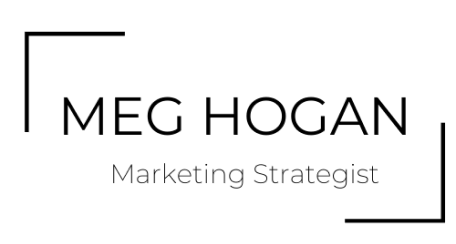Online marketing constantly changes and expands. Meerkat? Snapchat?Live video?
What else do you need to keep up with?
With those changes come tips, tricks and hacks that eventually become outdated. The platforms evolve so your social media management should too.
Get the lowdown on the Dirty Dozen Social Media Trends – and why you’re better off skipping them.
1. Hashtags in Twitter profiles
Social media gurus and specialists disagree on this – some argue that it’s an effective way to help people find you in their search results or if you have a branded hashtag you’re trying to promote.
On the other hand, many argue that the hashtags come off as spammy and distracting, especially if a Twitter user is just trying to get a snapshot of who you are in three seconds. There’s no evidence that this is effective in increasing your account’s reach or attracting new followers.
If you want people to find you - that's great! Just write a clear and clever bio – about who you are and what you offer. No hashtags needed.
2. Just Publish to Facebook and Your Followers Will See It
Collectively, marketers and business owners push steam through their ears as they see the engagement rate on Facebook posts.
How, exactly, did only 28 people see my post, when I have 600 page likes?
Gone are the days when a brand can just post and your followers will see it. Fair or not, Facebook is in the business to keep its users happy, so they prioritize what users want -- which are usually posts from their friends and family.
The workaround for this: post engaging, relevant, valuable content on Facebook.
Take a look at your best performing posts and ask "Is there a trend here? Is my audience telling me they looove X, but hate Y?"
Another workaround: invest in Facebook advertising.
3. Google My Business isn't necessary.
When you post to your Google My Business account, though, you’re positively impacting your ranking in search results, aka your SEO.
Posting about once every three days tells Google that you’re active and putting fresh information and news out there.So go ahead and make some effort on Google My Business.
4. New social platform? Let's create an account.
If you’re everything to everyone, you’re nothing to no one. Or so the saying goes.
The chances are that your business has a specific customer demographic in mind. So when you’re planning your marketing, you should use the networks your target demographic is on – and ditch the rest.
Spend your time focusing on building communities on the social media channels where your customers are, and don’t waste your time on the others.
For a run-down of who uses each network, check out the latest Pew Research.
5. Radio silence.
Not responding to customer and audience posts – for positive or negative comments – is a huge no-no. I
f you create a social media profile for your business or brand, you’re committing to using it as a two-way communication tool. Not responding is not an option.
If you’re a one-person show, set aside time in your day to check your social accounts. If you’re really tight on time, once in the morning and once in the afternoon each day is frequent enough to respond to any major complaints in a respectable time frame.
6. Static banners and profile photos.
This myth roots itself in fear: Set-up your social media profiles and if they look good when you do it, they’re good forever.
Nope. Sure, you could leave your banner images and profile photos the same forever, but you’re missing out on an opportunity to toot your own horn. Banners on Twitter and Facebook can be used for:
Seasonal sales – “Mother’s Day Sale – Buy One, Get One Free!”
Announcements – “Now partnering with Sue’s Bakery”
New products – “Brand New – Bicycles for Dogs”
New hours – “Extended Hours – Open until 10 p.m.”
New locations – “Check Us Out at 537 Paper Street”
Company updates – “We’ve been operating for 30 years!”
It’s your billboard. Use it.
7. Influencers are only for big brands.
If you’re not familiar with the phrase, and “influencer” is a celebrity with a large social media following (hundreds of thousands or millions) who promotes a product or service using their personal accounts.
Think: Any of the Kardashians. And really, most reality TV stars. They get paid, the brand gets exposure.
Until recently, influencer marketing did come with a huge price tag.Enter: micro influencers. These are bloggers, Instagram celebrities and people with some sort of fan following that’s more like 10,000. For a small to medium sized business, this means you can partner with a micro influencer on a post or promotion for a much smaller price point than whatever Kim Kardashian is being paid for her Instagram posts.Three years ago, this tip was true. Today, it’s not.
8. Set it and forget it.
The number of Facebook business pages continues to explode with enormous increases year after year. Right now, about 60 million businesses have a Facebook page. More likely than not, some of those pages aren’t being updated regularly – daily or even a few times a week.
Company pages on Facebook, Instagram, Twitter and Pinterest, are easy to set-up, but for many small and medium size businesses, fall off the priority list pretty quickly. While this is common – and the tip here was “Your company definitely needs a Facebook page,” – this is not an ideal approach to your business’ social media.I
f you set up an account, create a plan or at the very least keep it active. It shows that your brand has a sense of the importance of online marketing and establishing a two-way communication tool to connect with your customers.
9. All caps.
Maybe this wasn't a trend, but more so a faux pas. Very rarely do you need to use all caps for a social media post. I
f you feel like you do, take a step back, sleep on it, and think of a better way to say it. Your followers will appreciate not getting yelled at in their newsfeed.
10. Posts without images.
Social media users are skimming content. They’re skimming on their phones and on their desktops.A text-only post probably won’t catch their attention as they’re skimming.And, as more digital marketing data becomes available, we’re finding that:
Posts including images receive 650 percent higher engagement than text-only posts.
Facebook including images earned 87 percent of all engagements
Tweets with images receive up to 18 percent more clicks and 150 percent more retweets
Need images for your social media? It’s ideal to create your own graphics or take your own photos, but if you can’t do that head over to Pexels or Pixabay.
11. No branded content.
The barrier to entry for this is so. so. so. low now. Even if you don't have a graphic designer on staff, you can create branded images, infographics, quotes or facts with programs like Adobe Spark and Canva.
If you're a local business you can easily do this and increase brand awareness. Here’s an example of a Pittsburgh business branding their content in a simple, yet effective, way.
12. No thumbnails.
If you’re blogging for business – that’s wonderful! Creating content takes time, energy and creativity, so it’s excellent that you’re adding value to your customers through content. When you go to share that content on social media, you want a thumbnail photo. You know, that little preview photo that shows up when you put the link in your Facebook post or Tweet.
To do this in WordPress, add a “Featured Image” to your post. It takes just a few seconds and can make your social media sharing so much more visually appealing.This is an example of a Tweet promoting a post without a thumbnail image:
See the difference? Your followers do, too.





